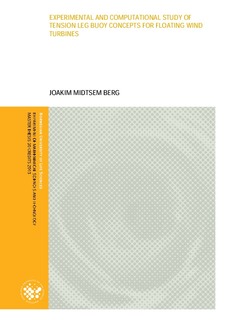| dc.description.abstract | Abstract:
The need for more and cleaner energy has led many research groups to improve the technology of renewable energy harvesting. This project group seeks to verify the mooring line stabilized Tension Legged Buoy concept as a viable option for floating offshore wind turbines. It also seeks to verify 3DFloat, a simulation tool developed by Prof. Tor Anders Nygaard. This will in the next step lower the cost of offshore wind energy and make it more competitive with fossil energy.
This thesis is based upon a series of experiments that was carried out in January 2013with intentions to study the behavior of a Tension legged structure in an ocean environment with different wave conditions.
The goal of this thesis is to document the experiment and afterwards attempt to replicate it in a series of simulations. The simulation gives the opportunity to understand the experiments better and discover what effects wave load have on the Tension Legged Buoy (TLB). We have measured the forces in the six mooring lines, six degrees of freedom movement of the top of each prototype. The wave height was measured both upstream and at the side of the prototype in water. The measured parameters were recorded synchronous. Video material from every experimental load case was recorded, both over and under sea level.
The simulations have been performed in ANSYS mechanical APDL v14.5 with nonlinear transient analysis. The software is a FEM software for structural analysis. The FEM simulation has also been used to calculate the eigen periods.
The results from the experiments and the simulations have been analyzed separately and then been compared. This makes it possible to sort out effects that are specific for each prototype, what effects that are load case specific and effects that are specific for the whole series of experiments.
It proves especially challenging to replicate the heave movements by simulating the prototypes in ANSYS. This is likely related to ANSYS lack of proper lid modelling opportunities in ocean environment. (EDR-Medeso, 2013) The deviating eigen periods and damping parameters are also likely sources for this.
There is no signs of significant errors in the experimental data. The results obtained from the experiments are proving to be good, and the experiment can be considered successful. The simulations delivered almost as good results as we could hope given the limitations in the software. This thesis shows that it is possible to simulate the behavior of the TLB with a certain level of accuracy, but more sophisticated tools than ANSYS mechanical APDL is recommended. | no_NO |
